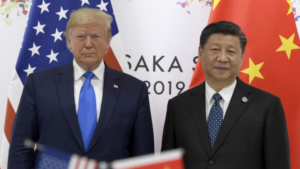
BEIJING – In response to a recent executive order signed by former U.S. President Donald Trump, the Chinese government has announced a fresh round of retaliatory trade tariffs on American products, escalating tensions between the world’s two largest economies.
The new tariffs, unveiled by China’s Ministry of Commerce on [date], target a range of U.S. exports, including agricultural products, automobiles, and key industrial goods. The move is widely seen as a direct countermeasure to the restrictions imposed by Trump’s administration on Chinese trade and investment, particularly in technology and manufacturing sectors.
A spokesperson for the Chinese Ministry of Commerce stated that Beijing had “no choice” but to act in response to what it described as “unilateral and protectionist” measures from the U.S. government. “China has always advocated for fair and open trade, but we must safeguard our economic interests against unjustified restrictions,” the statement read.
The Trump administration’s executive order, which prompted China’s retaliation, reportedly aimed at curbing Beijing’s influence in critical industries, tightening controls on Chinese investments in U.S. technology firms, and restricting imports of certain Chinese goods. The White House defended its actions as necessary to protect American businesses and national security.
The latest trade restrictions have heightened concerns over the ongoing U.S.-China trade war, which has seen both nations imposing billions of dollars in tariffs on each other’s goods since 2018. Economists warn that the renewed tensions could disrupt global supply chains and negatively impact industries in both countries.
Market analysts are closely monitoring the situation, with stock markets reacting to the announcement amid fears of further economic repercussions. Meanwhile, international trade organizations have called for renewed dialogue between Washington and Beijing to de-escalate the situation and prevent further strain on global commerce.
As both nations brace for the impact of the latest measures, experts suggest that the long-standing trade dispute is far from over, with potential further retaliations on the horizon.




